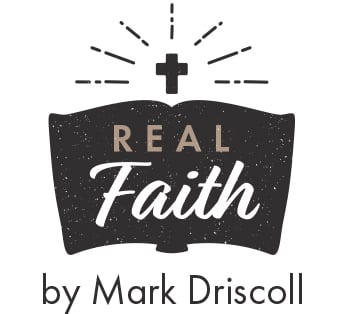The fulfillment of Jesus’ promise that the Holy Spirit would come in power once He ascended back into Heaven is historically reported by Luke in Acts 2:1–7, 14-18, “When the day of Pentecost arrived, they were all together in one place. And suddenly there came from heaven a sound like a mighty rushing wind, and it filled the entire house where they were sitting. And divided tongues as of fire appeared to them and rested on each one of them. And they were all filled with the Holy Spirit and began to speak in other tongues as the Spirit gave them utterance. Now there were dwelling in Jerusalem Jews, devout men from every nation under heaven. And at this sound the multitude came together, and they were bewildered, because each one was hearing them speak in his own language…But Peter, standing with the eleven, lifted up his voice and addressed them…But this is what was uttered through the prophet Joel: ‘And in the last days it shall be, God declares, that I will pour out my Spirit on all flesh…I will pour out my Spirit, and they shall prophesy. And I will show wonders in the heavens above and signs on the earth below…’”
God and His family of divine beings who were present for Creation [FOOTNOTE: Job 38:3-7] were also present for the Church. This is because the Church is the place between the cultures on earth and God’s Kingdom of Heaven, connected by the Spirit who brings the seen and unseen realms together.
Dr. Michael Heiser has done a great deal of groundbreaking scholarly research on the unseen realm in the Bible. Regarding the Church on the day of Pentecost he says, “The first two points of the description that deserve attention are the ‘violent rushing wind’ and the ‘divided tongues like fire.’ Both are images in the Old Testament associated with God’s presence—the disciples are being commissioned by God in his council like the prophets of old.” He goes on to say, “The whirlwind is familiar from divine encounters of Elijah (2 Kgs 2:1, 11) and Job (Job 38:1; 40:6). Ezekiel’s divine commissioning likewise has the enthroned Yahweh coming with great wind (Ezek 1:4). The whirlwind motif is often accompanied by storm imagery, which can also include fire (Isa 30:30). Having ‘wind’ as an element in describing God’s presence makes sense given that the Hebrew word translated ‘wind’ can also be rendered ‘spirit/Spirit’ (ruach).” And, he concludes by explaining, “Ezekiel’s commissioning is particularly instructive since not only does Yahweh come to him with a wind, but with the wind there is ‘fire flashing’ (Ezek. 1:4). Burning fire is a familiar element of divine-council throne-room scenes (e.g., Isa 6:4, 6; Dan 7:9). It is especially prominent in the appearances at Sinai (Exod 3:2; 19:18; 20:18; Isa 4:5). Fire in the Old Testament was an identifier of the presence of God, a visible manifestation of Yahweh’s glory and essence. It was also a way of describing divine beings in God’s service (Judges 13:20; Psalm 104:4).” [ENDNOTE #1]
The new covenant church of Jesus Christ began with the pouring out of the Spirit of God on the day of Pentecost. What happened that day “came from heaven” as the unseen realm flooded and invaded the seen realm and included “a sound like a mighty rushing wind” (Spirit of God) as “tongues as of fire appeared to them and rested on each one of them. And they were all filled with the Holy Spirit.”
God intended that His two families—human and divine—live and work together as one united family with the unseen and seen realms united. Sin caused humanity to rebel against God and side with Satan and demons, separating us from God and angels. Everything changed with Jesus defeating the demonic realm on the cross, reclaiming us as His people, and reconnecting human beings and divine beings as God’s one family. At Pentecost the two realms and two families were reunited once again, as the divine council was present at Pentecost with the first Christians.
The wind and fire in Acts 2 signified to readers informed by divine council scenes that the gathered followers of Jesus were being commissioned by divine encounter. They were being chosen to preach the good news of Jesus’ work. The fire connects them to the throne room. The tongues are emblematic of their speaking ministry. [FOOTNOTE: Ibid.]
The Church in one realm is created by the Kingdom in the other realm. The Church serves as the outpost for the Kingdom, exists to witness to the Kingdom, and is the beginning of the unveiling of God’s Kingdom across all creation. Starting at Pentecost, God intended that both His families would work together through the Church until they were forever together as one united forever family upon Jesus’ Second Coming.
The union of God’s divine and human families in the unseen realm of the invisible Church and the seen realm of the visible Church includes divine leaders in addition to human leaders in local churches. We see this fact in Revelation 2-3 where each of the seven local churches is said to have an “angel” and is told, “he who has an ear, let him hear what the Spirit says to the churches.” There is a lot more going on in a local church than we see with our eye, and a lot more supernatural activity than we are aware of in the unseen realm. Just because we don’t see what is happening does not mean that God is not acting. All of this is overseen by Jesus who is the Head over the Church ruling over the seen realm from the unseen realm.
- Michael S. Heiser, The Unseen Realm: Recovering the Supernatural Worldview of the Bible (Bellingham, WA: Lexham Press, 2015), 297.
